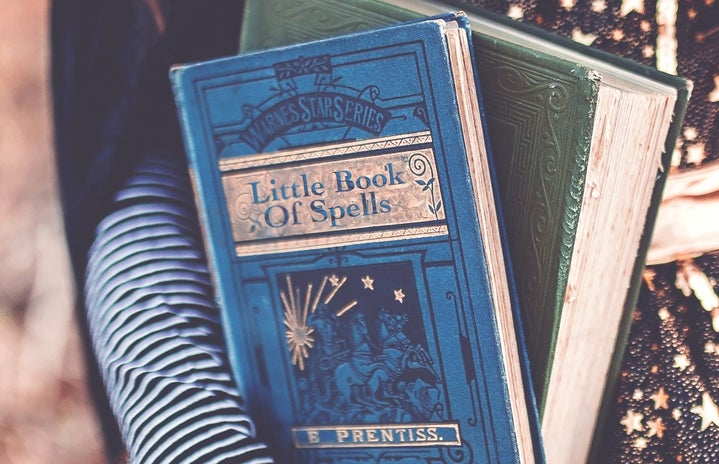It was past midnight. A man was suddenly woken up by the furious banging on the door of his house, as though whoever was standing outside would break the door open any moment. He looked at his wife and two daughters, sleeping peacefully, and a deep sense of foreboding came over him. He decided not to open the door, hoping against hope that the commotion outside would stop. It didn’t. Moments later, the door burst open and a mob descended into his home. It came straight for his wife and dragged her out by her hair. The man heard his wife’s desperate pleas, but the crowd was relentless. Someone from the mob struck her with a wood-cutting axe, and then she was thrown to the ground, below a tamarind tree. Four figures were already lying nearby, which, the man realised in horror were the corpses of other women who belonged to the same village. The women had been stripped and beaten, and finally hacked to death. Even as the sun rose, the attack continued, with villagers assaulting the lifeless bodies of their own neighbours.
This night of endless horrors did not occur in sixteenth-century Europe, or in some city far away in the Dark Ages. It took place in the month of August, in 2016, in a tiny village called Kanjia Marhatola in Ranchi, Jharkhand. The five women had been suspected as practitioners of witchcraft, accused of somehow causing the death of a boy a week ago, and consequently killed in a ‘witch hunt’. A witch hunt is a superstitious practice involving mass hysteria and moral panic, which seeks to ‘eliminate’ or purge individuals suspected of practising black magic. Historically, women have borne the brunt of these practices, especially those who followed alternate methods of worship. While witch-hunting has been condemned, rejected, and regretted by most societies, the practice continues to take place in certain regions of the world till date. In India, these witch hunts occur even today, especially in the states of Jharkhand, Bihar, Rajasthan, Gujarat, and Chhattisgarh. According to the National Crime Records Bureau, over 2500 people in India have been attacked, tortured, or murdered in witch hunts between 2000 and 2016. Many of these cases involve the presence of ‘witch doctors’, known as ojhas in certain regions. These local quacks often lead the trials of suspected ‘witches’, designing elaborate tests to establish whether a woman is a witch or not. One of these methods is to write the name of these women on the branches of a tree; if it dries up and dies, the suspect is declared a witch. The treatment that the victims are subjected to is unspeakably inhumane and horrifying: women have been stripped publicly, raped, forcibly paraded through their village, attacked mercilessly with iron rods and sticks, and even starved. They have been socially ostracised in most cases, and brutally murdered in others.
But why would a practice so heinous in nature, still be prevalent in the 21st century, especially when initiatives towards the eradication of superstition are so high in number? Sociologists explain that modern-day witch hunts are not just the outcome of superstitious beliefs. They are symptomatic of a highly unequal social structure, which rests on the foundation of patriarchy and the caste system. Author Shashank Shekhar Sinha underscores the impact of the ‘politics of development’ in the context of Jharkhand, which records one of the highest numbers of witch-hunt related crimes in the country. The current development model in Jharkhand has adversely affected the indigenous communities of the state, which have constantly been losing their lands to development projects. In the face of impoverishment and seemingly no recourse, they end up looking for ‘scapegoats’, mostly women, out of whom they can ‘exorcise off’ the bad luck. Similarly, in Gujarat, the growing disparity between villages and cities is seen as a major factor. In several villages, infant mortality is rising, there is a noticeable decline in agricultural produce, and children are suffering from malnutrition. Economists suggest that this exclusion of certain regions and communities from development plans leads to poverty and widespread disease, which then gives rise to a culture of superstition and violence. When children die from easily preventable or treatable diseases, or crops fail in the absence of proper infrastructural facilities, or when communities notice the absolute lack of prosperity in their surroundings, they often resort to irrational means to change the circumstances; sometimes, they even use superstition to justify the violence they inflict on women and other marginalised members of their community out of ‘frustration’. Local quacks, who often proclaim themselves as witch-hunters, themselves can only flourish where proper healthcare and educational facilities are lacking.
Apart from the politics of development, another major cause of witch-hunting in India involves property disputes. Women who own land, especially widowed or single women, end up becoming the main subjects of rumours involving the supernatural, often spread by their own relatives in order to grab their land. They are then pressurised and forced into signing over their property rights as punishment for practising black magic. Women are also labelled witches to force sexual favours out of them, to justify sexual assault against them or as revenge for turning down sexual advances.
Among women, Dalit and Adivasi women are particularly vulnerable to such hunts, especially when they are seen as challenging the existing caste hegemony. In fact, power dynamics play a crucial part in this practice. In societies where women are generally not allowed to own or control resources by themselves, land-owning women are not only seen as a threat to prevailing social norms but also as illegitimate owners of those resources. Practices like these, which involve the public humiliation of women, are designed to send a larger message to the society, to set an example. In 2012, three women in Gujarat objected to their male relatives relieving themselves on the land where the women grew their crops. A few months after the episode, two of the men died from separate illnesses. The remaining men then initiated a witch hunt, accusing the women of being dakans (the Gujarati term for witches) that ate the souls of their relatives, beating them in public with iron pipes and forcing them to sign over their fertile land. The message was clear: if you dare to speak against men, be prepared to face the consequences.
Experts allege that the cases of witch hunts that are recorded are far fewer than the actual number of such incidents. Most victims of witch hunts are not only extremely vulnerable, but they might also lack the social and economic capital to report the violence they are subjected to. In a few cases, local Panchayats have also been involved in sanctioning such witch hunts, empowering the mob even further. So, what legal remedies can survivors pursue? While a national-level law specifically pertaining to witch-hunting does not exist yet, provisions under the Indian Penal Code 1860 can be applied for such cases, including section 302 (charge for murder), section 376 (charge for rape) and section 354 (charge for assault intended to outrage a woman’s modesty) among others. Importantly, several states have passed legislations specific to this practice: The Odisha Prevention of Witch-Hunting Act, 2013; The Rajasthan Prevention of Witch-Hunting Act, 2015; and The Assam Witch- Hunting (Prohibition, Prevention and Protection) Act, 2015, among others. Demands for national-level legislation to prevent and punish acts of witch-hunting, however, continue to be on the rise.


